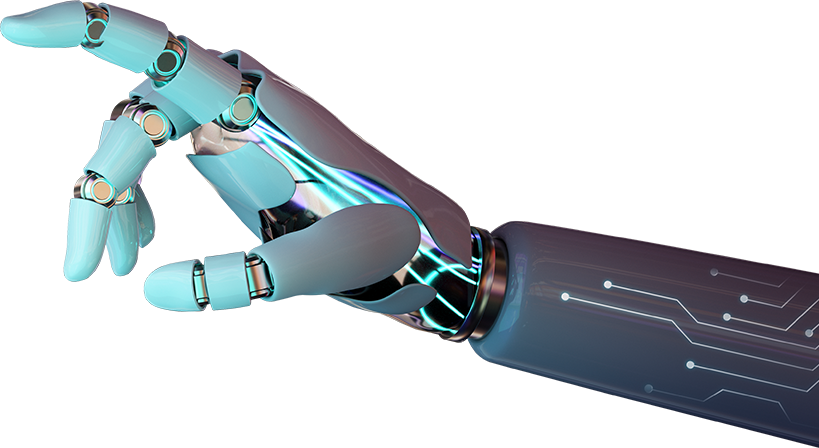Navigating the vast realm of computer vision algorithms can feel daunting, yet it’s crucial for those keen on advancing their technical prowess. From edge detection to intricate image processing, these techniques shape the future of technology. Dive into this exploration and uncover how these algorithms revolutionise digital imaging and transform real-world applications. Ready to expand your expertise? Let’s go.
Table of contents
ToggleUnderstanding computer vision algorithms
Computer vision algorithms form the backbone of how machines interpret visual data. These algorithms, such as convolutional neural networks, enable computers to analyse and understand images and videos. Mastery of these techniques allows you to tackle challenges like object detection and facial recognition. By utilising machine learning, algorithms adapt to various data sets, enhancing accuracy. Understanding the nuances of these algorithms is vital for optimising performance in real-world applications. Familiarity with terms like feature extraction and image segmentation deepens your grasp of complex vision tasks, empowering your projects with innovative solutions.
The role of algorithms in computer vision
In computer vision, algorithms serve as the backbone, enabling machines to interpret and analyse visual data. They facilitate tasks like image segmentation and pattern recognition. By efficiently processing pixels and extracting meaningful information, these algorithms empower systems to perform complex visual tasks, paving the way for innovations in autonomous vehicles and facial recognition technologies.
Key challenges in computer vision
- Variability in lighting conditions affects image quality.
- Occlusion leads to incomplete data interpretation.
- High computational cost limits real-time processing.
- Ambiguity in object boundaries challenges segmentation.
- Noise interference complicates feature extraction.
- Scale variation complicates object recognition.
Computer vision faces numerous challenges that complicate its application in dynamic environments. Overcoming these hurdles requires advanced algorithms and innovative approaches to enhance accuracy and efficiency.
Edge detection techniques
Edge detection forms a crucial part of computer vision, enabling machines to identify object boundaries in images. It involves identifying significant changes in intensity. These techniques are vital for subsequent image processing tasks, offering a foundation for more complex algorithms.
- Sobel operator detects edges by emphasising regions with high spatial frequency.
- Canny edge detector utilises a multi-stage approach for precise edge localisation.
- Prewitt operator is simpler, yet effective for basic edge detection.
- Roberts cross operator highlights diagonal edges efficiently.
Popular edge detection algorithms
Sobel et Canny figurent parmi les algorithmes de détection de contours les plus populaires. Sobel utilise un filtre pour calculer les gradients d’intensité. Canny, plus sophistiqué, améliore la détection par un filtrage gaussien et une suppression non maximale. Ces méthodes sont essentielles pour extraire des informations structurelles dans les images.
Applications of edge detection in computer vision
Edge detection serves as a cornerstone in computer vision. It helps identify boundaries within images, enhancing various applications.
- Facilitates object recognition in autonomous vehicles
- Enhances medical imaging for tumour detection
- Supports facial recognition systems
- Improves image segmentation in satellite imagery
- Assists in motion tracking for video surveillance
Edge detection remains vital for precise image analysis and accurate object detection, contributing significantly to advancements in computer vision algorithms.
Image processing fundamentals
| Concept | Description |
|---|---|
| Filtering | Removes noise, enhances features. |
| Transformation | Alters image scale, rotation. |
| Segmentation | Divides image into regions. |
| Enhancement | Improves image clarity. |
Core concepts of image processing
Image processing revolves around transforming images into digital form, facilitating enhancements and analysis. Key concepts include pixel manipulation, filtering, and colour space conversion. Techniques such as convolution and histogram equalisation play crucial roles. These processes enable noise reduction, image sharpening, and feature extraction. Understanding these elements is vital for developing robust computer vision algorithms and improving image clarity and interpretability in various applications, from medical imaging to autonomous vehicles.
Common image processing algorithms
Common image processing algorithms include Gaussian Blur, which smooths images by reducing noise. Histogram Equalisation enhances contrast, improving visual clarity. Fast Fourier Transform processes images in frequency domain, aiding in pattern recognition. Morphological Operations, such as dilation and erosion, refine image structures. These techniques form the backbone of image enhancement and analysis, crucial for advanced computer vision tasks.
Advanced computer vision applications
Advanced computer vision applications transform industries by enabling sophisticated tasks. Key areas include:
- Object recognition: Identifying and labelling objects in images.
- Classification: Sorting images into predefined categories.
- Image segmentation: Dividing images into meaningful segments.
Implementing advanced vision techniques often involves integrating machine learning models to enhance accuracy and efficiency.
Object recognition and classification
Object recognition involves identifying objects within images, while classification assigns them to predefined categories. These processes rely on neural networks and deep learning techniques, which enhance accuracy and efficiency. Applications range from facial recognition systems to autonomous vehicle navigation, significantly impacting technological advancements.
Real-world examples of computer vision
Computer vision enhances autonomous vehicles by enabling precise navigation and obstacle detection. In healthcare, it assists in medical imaging for accurate diagnostics. Retailers employ it for inventory management and customer insights, improving efficiency. These applications demonstrate the transformative power of computer vision across diverse industries.
Future trends in computer vision
Computer vision continues to evolve rapidly. Emerging algorithms, like generative adversarial networks (GANs) and transformers, redefine image analysis. The integration of AI accelerates innovation, enhancing accuracy and efficiency in tasks such as object recognition. Quantum computing also shows promise, potentially revolutionising processing power. These advancements enable real-time applications, crucial for autonomous systems. The emphasis on ethical AI ensures responsible deployment, addressing bias and privacy concerns. As technology progresses, interdisciplinary collaboration becomes vital, merging insights from fields like neuroscience and robotics. Staying informed about these trends offers a competitive edge in this dynamic landscape.
Emerging algorithms and technologies
New algorithms and technologies in computer vision continue to transform the field. These innovations enhance the capabilities of computer vision systems. Key developments include:
- Graph neural networks for improved relational data processing.
- Generative adversarial networks (GANs) for realistic image synthesis.
- Transformer models for efficient image understanding.
- Federated learning for secure data training across devices.
- Quantum computing algorithms for faster image analysis.
These advancements drive significant progress in areas like object recognition and autonomous systems.
The impact of AI on computer vision development
AI revolutionises computer vision by enhancing algorithmic efficiency and accuracy. Machine learning models, especially deep learning, transform how systems interpret visual data. They enable automated feature extraction and improve object recognition. AI-driven advancements accelerate real-time image processing, crucial for applications like autonomous vehicles. AI frameworks allow for scalable solutions, addressing computational challenges in high-dimensional data analysis. As AI technology evolves, it continually influences the development of more sophisticated computer vision algorithms, offering unprecedented opportunities for innovation in sectors such as healthcare, security, and robotics.
Popular Questions
What is the significance of edge detection in computer vision?
Edge detection plays a crucial role in identifying object boundaries within images. It enhances image interpretation by highlighting significant changes in intensity, thus aiding in object recognition and scene understanding.
How do image processing algorithms contribute to computer vision?
Image processing algorithms refine raw image data, making it suitable for analysis. They perform tasks like noise reduction, contrast enhancement, and feature extraction, essential for accurate interpretation and decision-making in vision systems.
What challenges do algorithms face in advanced computer vision applications?
Algorithms often struggle with variations in lighting, occlusion, and scale changes. Real-time processing demands and high computational costs also pose significant hurdles in deploying efficient computer vision solutions.






